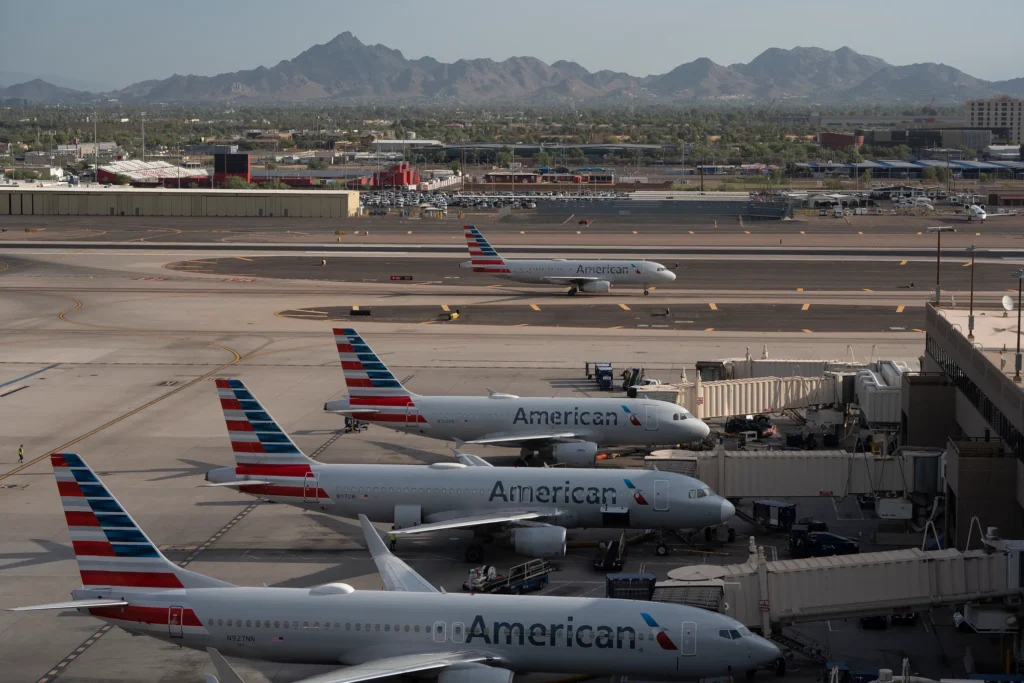As the Northeast battles intense storms, US flight delays due to severe weather have reached critical levels, disrupting travel for thousands across the country. On Tuesday, nearly 5,000 flights were either delayed or canceled, leaving travelers stranded and airports overwhelmed.
This extreme weather event—marked by heavy rain, thunderstorms, and strong winds—has primarily affected major travel hubs in cities like New York, Boston, and Philadelphia. With the storm system showing little signs of slowing down, airlines and airports are bracing for continued challenges in the coming days.
Flight Delays and Cancellations: The Numbers
According to real-time flight tracking website FlightAware, over 4,900 flights were delayed or canceled across the United States on Tuesday. Of these:
- 3,400+ flights experienced delays
- 1,500+ flights were outright canceled
- The majority of these flights originated or landed in the Northeast region
This sudden spike in delays has made it one of the most disruptive travel days in recent memory, especially for those trying to return home after the extended July 4th holiday weekend.
Which Airports Are Affected the Most?
Several major airports in the Northeast have been particularly hard-hit by the weather disruptions. The following are some of the most impacted:
- Newark Liberty International Airport (EWR): Over 400 delays and 250 cancellations
- John F. Kennedy International Airport (JFK): Hundreds of delays due to limited visibility and heavy rainfall
- LaGuardia Airport (LGA): One of the highest cancellation rates in the country
- Boston Logan International Airport (BOS): Faced several hours of flight groundings
Air traffic controllers have had to limit departures and arrivals to ensure safety, causing a ripple effect across other regions of the U.S.
What’s Causing the Severe Weather?
Meteorologists blame a slow-moving cold front mixed with high humidity and unstable air masses for the current weather chaos. The system has resulted in:
- Torrential rain across New York and New England
- Frequent thunderstorms, some with dangerous lightning
- Wind gusts reaching up to 60 mph in some areas
- Localized flooding in parts of New Jersey and Massachusetts
The National Weather Service (NWS) issued multiple weather advisories and flash flood warnings, urging people to stay off the roads and monitor weather updates regularly.
Traveler Frustration and Stories from the Ground
Travelers across the country have taken to social media to share their experiences of long wait times, crowded terminals, and sudden flight cancellations.
Jessica Morales, a traveler from Chicago, was supposed to fly to Boston for a family wedding. “I was at the airport for 7 hours. My flight kept getting pushed back, and then eventually it was canceled. No help from the airline,” she said.
At JFK, hundreds of passengers were seen sleeping on floors and benches, many unsure when—or if—they would get to their destinations.
The timing couldn’t have been worse, as many Americans were returning home from the July 4th celebrations or heading out for summer vacations.
Airline Responses and Rebooking Policies

Airlines have responded by issuing travel waivers, allowing customers to rebook without paying extra fees. Some of the major carriers taking action include:
- Delta Air Lines: Waivers offered for flights affected by Northeast weather through July 11
- American Airlines: Encouraging travelers to check app notifications and offering refunds for canceled flights
- United Airlines: Offering hotel vouchers and food credits for stranded passengers at key airports
Despite these efforts, long customer service lines—both in person and over the phone—have frustrated many passengers seeking immediate help.
Tips for Travelers During Disruptions
If you have upcoming travel plans in or out of the Northeast, consider the following tips:
- Check your flight status frequently via airline apps or FlightAware
- Avoid booking tight connections as delays may carry over for hours
- Pack essentials in your carry-on, including snacks, medication, and phone chargers
- Stay in contact with your airline and opt-in for SMS/email alerts
- Know your rights: If your flight is canceled, you’re usually entitled to a full refund
Most importantly, stay flexible. The situation can change quickly with weather-related disruptions.
Looking Ahead: What to Expect Next
Weather forecasters suggest the storm system could continue affecting travel over the next 24 to 48 hours, especially if it stalls over the Atlantic coast.
Here’s what experts are predicting:
- Wednesday: Continued rain and wind in the Northeast, especially around New York and New England
- Thursday: Slight clearing but potential for residual delays
- Friday and weekend: Conditions expected to normalize unless new systems develop
Airlines and airports are coordinating closely with the Federal Aviation Administration (FAA) to adjust schedules and keep passengers informed.
Final Thoughts
The recent wave of US flight delays due to severe weather highlights how fragile air travel can be in the face of natural forces. With nearly 5,000 flights affected in one day, this event serves as a reminder for travelers to always plan ahead, stay informed, and prepare for the unexpected.
While frustrations are valid, the top priority for airlines and air traffic controllers remains passenger safety. As weather conditions improve, operations are expected to gradually return to normal.
Until then, travelers flying through the Northeast should brace for possible delays, stay connected to official updates, and take extra precautions to navigate this turbulent stretch of summer travel.
Read Next – Air France-KLM Stake in SAS to Reach 60.5%: What It Means for the Airline Industry






